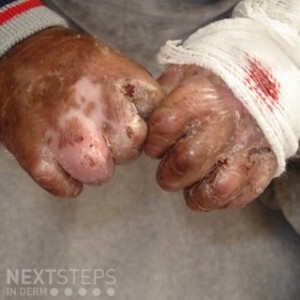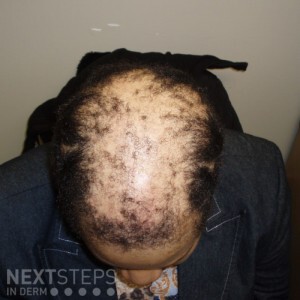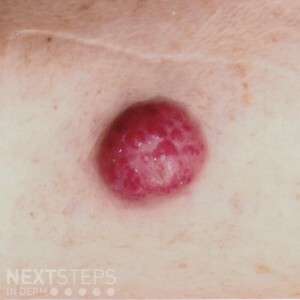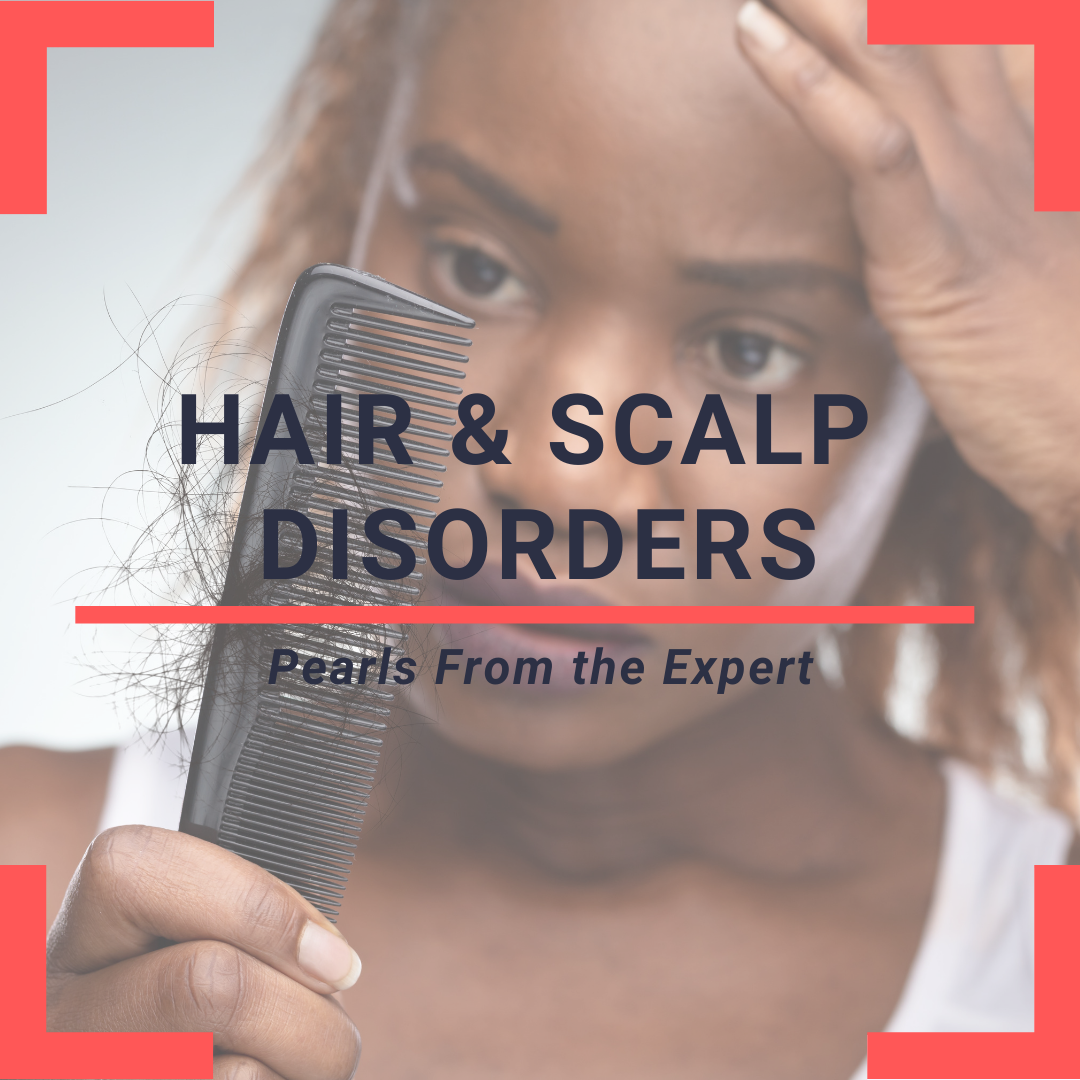Epidermolysis Bullosa – Friday Pop Quiz 11/8
 The picture shown is considered to be diagnostic for what type of epidermolysis bullosa:
A. Junctional epidermolysis bullosa- Non Herlitz type
B. Junctional epidermolysis bullosa- Herlitz type
C. Dowling-Meara form of Epidermolysis Bullous simplex
D. Dominant dystrophic epidermolysis bullosa
E. Recessive dystrophic epidermolysis bullosa
To find out the correct answer …
The picture shown is considered to be diagnostic for what type of epidermolysis bullosa:
A. Junctional epidermolysis bullosa- Non Herlitz type
B. Junctional epidermolysis bullosa- Herlitz type
C. Dowling-Meara form of Epidermolysis Bullous simplex
D. Dominant dystrophic epidermolysis bullosa
E. Recessive dystrophic epidermolysis bullosa
To find out the correct answer …
 The picture shown is considered to be diagnostic for what type of epidermolysis bullosa:
A. Junctional epidermolysis bullosa- Non Herlitz type
B. Junctional epidermolysis bullosa- Herlitz type
C. Dowling-Meara form of Epidermolysis Bullous simplex
D. Dominant dystrophic epidermolysis bullosa
E. Recessive dystrophic epidermolysis bullosa
To find out the correct answer …
The picture shown is considered to be diagnostic for what type of epidermolysis bullosa:
A. Junctional epidermolysis bullosa- Non Herlitz type
B. Junctional epidermolysis bullosa- Herlitz type
C. Dowling-Meara form of Epidermolysis Bullous simplex
D. Dominant dystrophic epidermolysis bullosa
E. Recessive dystrophic epidermolysis bullosa
To find out the correct answer … Continue reading "Epidermolysis Bullosa – Friday Pop Quiz 11/8"


 The best diagnosis of this type of cicatricial alopecia shown in this image is:
A. Chronic cutaneous lupus erythematosus.
B. Lichen planopilaris
C. Central centrifugal cicatricial alopecia
D. Pseudopelade of Brocq
E. Alopecia mucinosa
To find out the correct answer and read the explanation, click here.
Brought to you by our brand partner Derm In-Review
…
The best diagnosis of this type of cicatricial alopecia shown in this image is:
A. Chronic cutaneous lupus erythematosus.
B. Lichen planopilaris
C. Central centrifugal cicatricial alopecia
D. Pseudopelade of Brocq
E. Alopecia mucinosa
To find out the correct answer and read the explanation, click here.
Brought to you by our brand partner Derm In-Review
…  Morbihan Disease (MD) is a rare condition but can be a very rewarding diagnosis to make. I interviewed Dr. Kimberly Huerth on her poster presentation of an African-American man with long-standing, progressive Morbihan Disease that took 16 years to diagnose. MD in patients of skin of color may be underreported as well as underdiagnosed. Similarly, rosacea in skin of color is often overlooked and th …
Morbihan Disease (MD) is a rare condition but can be a very rewarding diagnosis to make. I interviewed Dr. Kimberly Huerth on her poster presentation of an African-American man with long-standing, progressive Morbihan Disease that took 16 years to diagnose. MD in patients of skin of color may be underreported as well as underdiagnosed. Similarly, rosacea in skin of color is often overlooked and th …  Biopsy of this lesion reveals a poorly-defined dermal mass of small blue monomorphic round cells with scant cytoplasm and nuclear molding. Which histologic stain is most helpful in distinguishing this lesion from small cell lung carcinoma?
A. CK20
B. TTF-1
C. Chromogranin
D. Synaptophysin
E. Somatostatin
To find out the correct answer and read the explanation, click here.
Brou …
Biopsy of this lesion reveals a poorly-defined dermal mass of small blue monomorphic round cells with scant cytoplasm and nuclear molding. Which histologic stain is most helpful in distinguishing this lesion from small cell lung carcinoma?
A. CK20
B. TTF-1
C. Chromogranin
D. Synaptophysin
E. Somatostatin
To find out the correct answer and read the explanation, click here.
Brou …  A full head of hair. This is how I came away from Dr. Heather Woolery-Lloyd’s lecture on hair and scalp disorders at the 2019 Skin of Color Update. There were many aspects of her talk that challenged me to rethink how I approach the management of hair loss in my patients. In this post we will cover biotin’s role in treating alopecia, and important considerations in the treatment of central cen …
A full head of hair. This is how I came away from Dr. Heather Woolery-Lloyd’s lecture on hair and scalp disorders at the 2019 Skin of Color Update. There were many aspects of her talk that challenged me to rethink how I approach the management of hair loss in my patients. In this post we will cover biotin’s role in treating alopecia, and important considerations in the treatment of central cen …